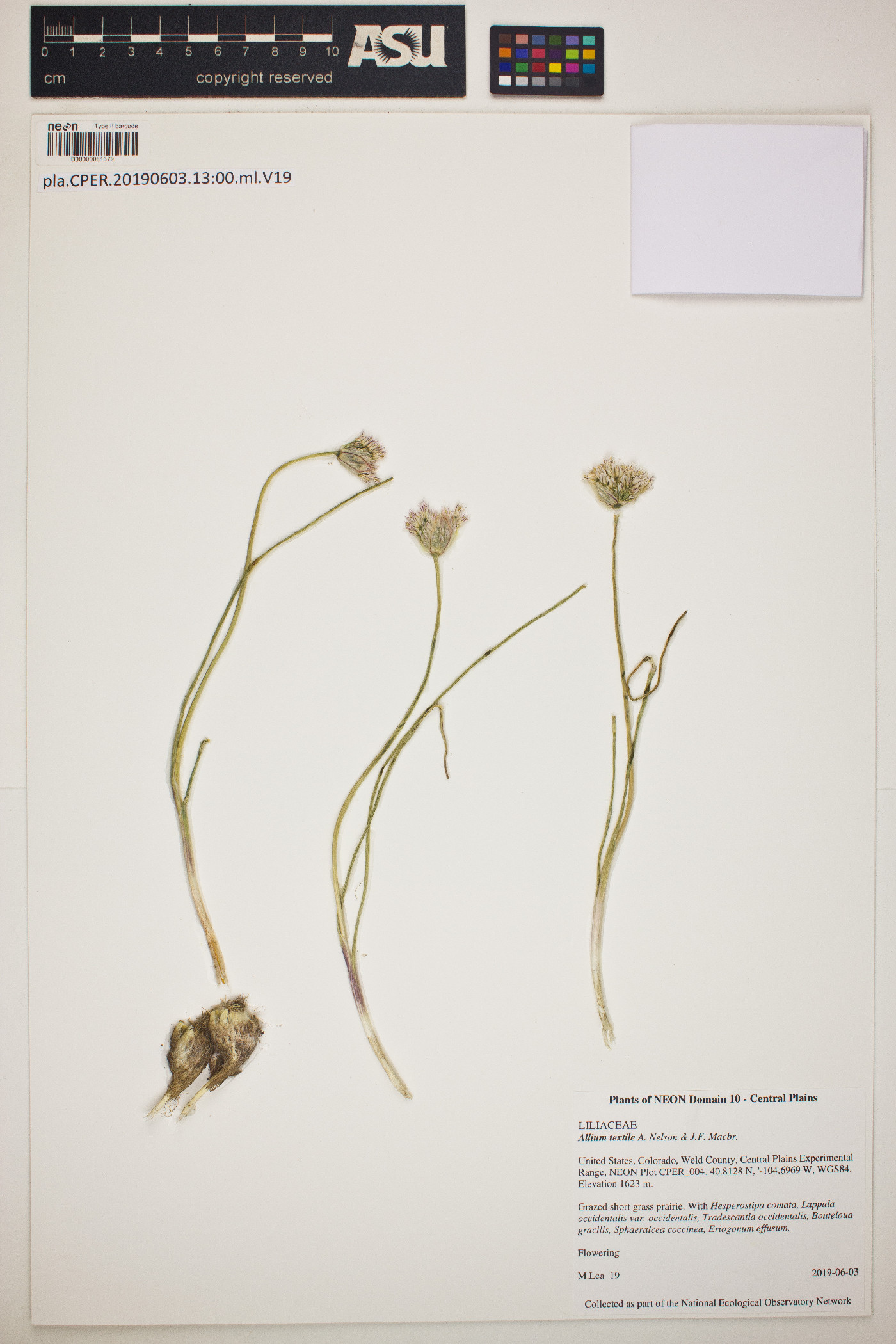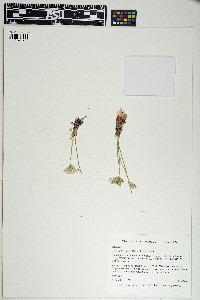|
|
|
|
Family: Amaryllidaceae
textile onion
[Allium aridum Rydb., moreAllium geyeri var. textile (A. Nelson & J.F. Macbr.) B. Boivin] |
Bulbs 1-3+, not rhizomatous, without basal bulbels, ovoid, 1.2-2.5 × 1-2 cm; outer coats enclosing 1 or more bulbs, gray or brown, reticulate, cells fine-meshed, open, fibrous; inner coats whitish, cells vertically elongate and regular or obscure. Leaves persistent, green at anthesis, 2, sheathing; blade solid, ± straight, channeled, semiterete, 10-40 cm × 1-3(-5) mm, margins entire or denticulate. Scape persistent, solitary, erect, ± terete, 5-30(-40) cm × 1-3 mm. Umbel persistent, erect, compact to ± loose, 15-30-flowered, hemispheric, bulbils unknown; spathe bracts persistent, 3, usually 1-veined, ovate, ± equal, apex acuminate. Flowers urceolate to campanulate, 5-7 mm; tepals erect, white or rarely pink, with red or reddish brown midribs; outer whorl broadly ovate to lanceolate, unequal, becoming callous-keeled and permanently investing capsule, margins often obscurely toothed apically, apex obtuse to acuminate; inner whorl narrower, margins entire, apex distinctly spreading; stamens included; anthers yellow; pollen yellow; ovary ± conspicuously crested; processes 6, central, distinct or connate in pairs across septa, ± erect, rounded, to 1 mm, margins entire, becoming variously developed or obsolete in fruit; style linear, equaling filaments; stigma capitate, unlobed or obscurely lobed; pedicel 5-20 mm. Seed coat shining; cells ± smooth, without central papillae. 2n = 14, 28. Flowering May--Jun. Dry plains and hills; 300--2400 m; Alta., Man., Sask.; Colo., Idaho, Iowa, Kans., Minn., Mont., Nebr., Nev., N.Mex., N.Dak., S.Dak., Utah, Wash., Wyo. Bulb ovoid-conic, 1-2 cm with fibrous-reticulate coats; stem 1-2.5 dm; lvs mostly 1 or 2, arising below the middle, 1-2 mm wide, bracts ovate, short-acuminate; bulblets none; pedicels 5-10 mm, or in fr to 20 mm; tep pink or white, lanceolate or lance-oblong, 6-8 mm, acute; filaments shorter than the perianth; fr retuse, 3-4 mm, its valves (and each lobe of the ovary) bearing 2 short erect projections on the back just below the top; 2n=14, 28. Dry plains and prairies; s. and w. Minn. and w. Io. to Alta., Wash., and N.M. May, June. (A. reticulatum) Gleason, Henry A. & Cronquist, Arthur J. 1991. Manual of vascular plants of northeastern United States and adjacent Canada. lxxv + 910 pp. ©The New York Botanical Garden. All rights reserved. Used by permission. |



